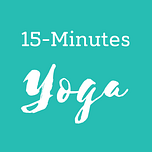We are on the second day of our segment on “Satya” or non-falsehood. Satya is one of the 5 Yamas or restraints of a yoga student. On the other side of non-falsehood, Satya also means truthfulness.
Today, our focus will be on truthfulness of our breath. How do we practice our asanas - our poses - in ways that are in integrity with the truth of our breath? What does our breath mean during practice?
Breath is one of the only functions in the body that is a two-way street. We can both control breath, through pranayama or such as by holding your breath while swimming, etc. - and our breath continues in our most unconscious states, in our deepest sleep.
Few other body systems operate this way. We cannot make our skin grow, we cannot stop our stomachs, we cannot will our hearts to stop beating. On the other end, our muscles need input to act. Other systems have some two-way elements, that through yoga or other deep mind-body practice, can be mastered with practice - but breath is the major one that most everyone masters, otherwise you wouldn’t be listening!
Our lungs are innervated by the vagus nerve, connecting our deepest most reptilian brain, the brain stem - with our most vital organs: heart, lungs, stomach and others.
Unless you’re James Bond or a monk in deep meditation training, the breath is the only two-way street in the vagus system. For all of us, the natural breath is a mirror to our state of mind. When we notice natural breath at the beginning of class, we are tuning in to watch the “State of the Union” of Mind and Body.
The natural breath does not always feel good. If you’re having a panic attack, or even mildly stressed, you may notice that the breath becomes constricted or shallow in certain areas. You may feel headaches or tight shoulders. Sometimes, we don’t even notice - such as the classic case of someone shouting, “I’m not angry!”
During yoga practice, our breath is both an anchor and a first line cue to the state of our nervous system. During challenging poses, we return to the breath. We also notice the breath, as a cue that it is time to amplify or dial down a pose.











